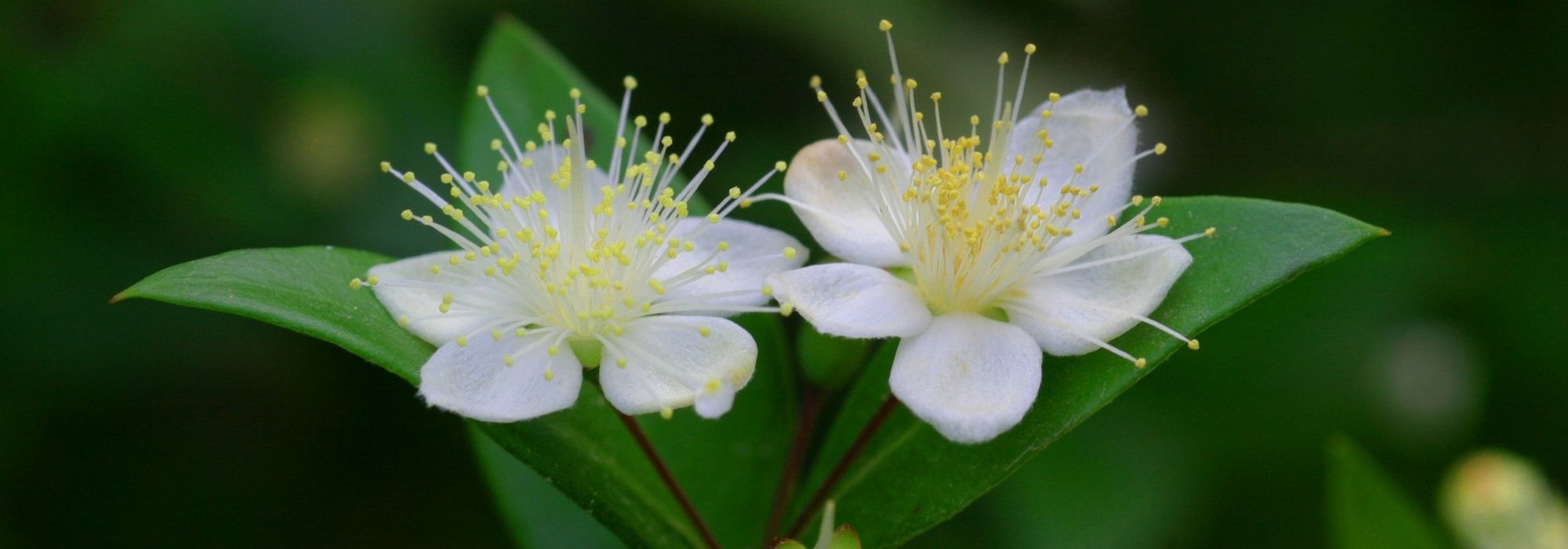
Myrtle, Myrtus : planting, pruning and care
Contents
Myrtle, in a nutshell
- Myrtles are evergreen shrubs of a mild climate with aromatic and medicinal foliage
- Small star-shaped white flowers, fragrant, punctuate the foliage throughout the summer
- Black, red, or white berries brighten the garden during the bleak season
- Hardy in Mediterranean climates and along the Atlantic coast, they thrive in any poor, dry, and well-drained soil
A word from our expert
Myrtles are evergreen shrubs evocative of scrub vegetation and balsamic scents. They are low-maintenance, robust and evergreen, more or less voluminous, and characterised by slow growth. There are many cultivars with more or less compact habits that allow for multiple uses in dry gardens, from imposing solitary specimens to dwarf forms carpeting a slope, regardless of exposure and proximity to the seaside. Famous for the intense fragrance of their foliage, myrtle lends itself to repeated pruning and can be used as a hedge or in borders, in topiary form or in pots.
The dark green foliage sparkles with a stunning summer flowering that is both light, generous, and fragrant, lasting over 2 months. The path through the scrub or garrigue of the Mediterranean hinterland showcases this typical bush at the edge of pine or oak forests, easily recognisable by its small, slightly prickly, aromatic ovate leaves.
Common myrtle can be found in a wide variety of soils, from acidic, neutral to calcareous depending on the clones, and at altitudes ranging from 0 to 400 m. There are Chilean myrtles, with very decorative orange and cream bark, which seem to be more frost-tolerant than Myrtus communis but require a more humid atmosphere. Beautiful specimens can be observed in Great Britain or Ireland.
Description and Botany
Botanical data
- Latin name Myrtus communis
- Family Myrtaceae
- Common name Common myrtle
- Flowering between July and September
- Height between 0.30 and 5 m
- Exposure full sun or partial shade
- Soil type any soil, even poor, not too dry, with pH variable depending on the cultivar
- Hardiness Average (-10 to -12°C)
The term “myrtle” applies to a number of aromatic-leaved bushes from the Myrtaceae family of various origins. The most cultivated species, originating from the Mediterranean region, constitutes the genus Myrtus, which includes 3 species. The myrtles from Chile and Bolivia comprise the genera Luma and Ugni, while those from New Zealand belong to the genus Lophomyrtus. It is worth noting that the New Zealand myrtle (or false myrtle) also refers to Leptospermum. Myrtus was simply the name given by the Romans and Greeks to the Mediterranean shrub – in Greek, the root of the name refers to “fragrance” – while communis, meaning “common,” indicates its frequency within the matorral.
The common myrtle is therefore an evergreen shrub found in the wild at the edge of oak or pine forests, in the garrigues and rocky maquis of the Mediterranean region (Southern Europe, North Africa, and the Near East up to Lebanon). In France, it grows in the Esterel massif, the Gulf of Saint-Raphaël, and especially in Corsica. It associates with the kermes oak (Quercus coccifera) and the mastic tree (Pistacia lentisca), which populate the cooler areas of the Mediterranean on the margins of degraded zones.
Myrtus communis forms a hemispherical bushy mass, starting fairly close to the ground and varying in size, reaching up to 5 m in height. The shrub can live to a venerable age of 300 years! The erect branches are slightly pubescent and light in colour, while the aged bark reveals a reddish hue.
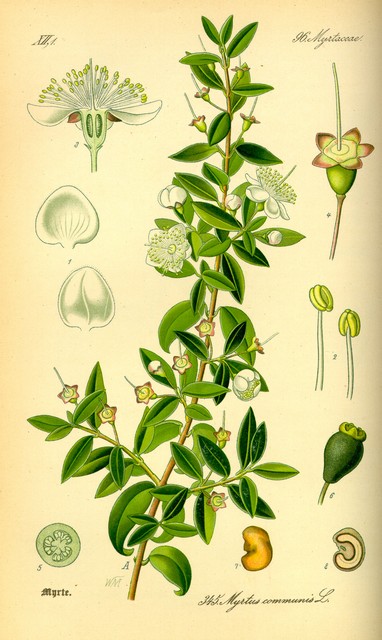
Myrtus communis – botanical illustration
The opposite leaves, elliptical and ending in an acute point, measure 15 to 40 mm long and 5 to 15 mm wide. The leathery and glabrous lamina, dark green and glossy, shows a very pronounced central vein. Carried by a very short petiole, it is marked with translucent glands visible against the light, while the underside is slightly lighter. The leaves are evergreen and highly aromatic. They release their essential oils when it is very hot to lower their temperature. The scent is described as aromatic, resinous, waxy, and slightly fruity by perfumers. There are variegated yellow foliage forms among Chilean myrtles, such as Luma apiculata ‘Glanleam Gold’.
The shrub blooms generously in mid-summer, from July to September, which is surprising for a plant from a dry climate. The small, immaculate white flowers with 5 petals, measuring 2.5 to 3 cm wide, appear solitary, borne on a long peduncle of 12-25 mm, in the axils of the leaves, on the shoots of the year. They open into a wide bouquet of prominent white stamens overflowing from the corolla. Hermaphroditic, it features a central pistil. They are followed in autumn by the formation of ovoid, fleshy, waxy berries, bluish-black, sometimes white, measuring 1 to 1.5 cm in diameter. The fruit contains numerous seeds of 2 mm, cream in colour. It is highly appreciated by birds that feast on it during winter.
The genus Luma displays a cloud of cream flowers with 4 petals that literally envelop the tree from summer until mid-autumn. The berries are dark purple. Ugni molinae (syn. Myrtus ugni), known as the Chilean guava, also grows in Bolivia. It features small bell-shaped white or pink flowers and sour reddish-purple fruits that are highly valued in jams for their strawberry fragrance.
The berries of Myrtus communis are used to make jellies, jams, or liqueurs such as “mirto” in Sardinia or as a condiment. The shrub, with average hardiness (-10°C), is valued ornamentally in Mediterranean gardens with poor and rather acidic soil (metamorphic and volcanic soils), but there are forms tolerant to limestone, such as the subspecies tarentina, known as the Taranto myrtle. This latter is slightly less vigorous than the typical species (2 m high and 1.50 m wide) and has smaller foliage (1 cm long and 0.5 cm wide), shiny on both sides, denser, resembling boxwood. Its drought resistance, slow growth, and tolerance to repeated pruning make it a perfect candidate for forming hedges, adorning terraces, or flowering the undergrowth of a pine forest.
Myrtle wood, hard and dense with fine grains, is a noble wood, appreciated for carving, marquetry, and turning. It is notably used for creating chess pieces. The leaves and bark were used in leather tanning. An essential oil is extracted from the foliage, widely used in perfumery and aromatherapy, distinguished by two chemotypes: the myrtenyl acetate chemotype from Morocco and the cineole chemotype from France. It is used as a venous and lymphatic decongestant (for haemorrhoids and varicose veins) and as an antispasmodic. Its medicinal properties are also antiseptic, astringent, sedative, and antipyretic.
Myrtle often appears as a sacred shrub; it is mentioned in the Quran as a shrub of paradise and in the Bible as a symbol of divine generosity. It symbolizes bravery among the Romans, peace for Jews and Muslims, love in Greek mythology, and Arabic poetry.
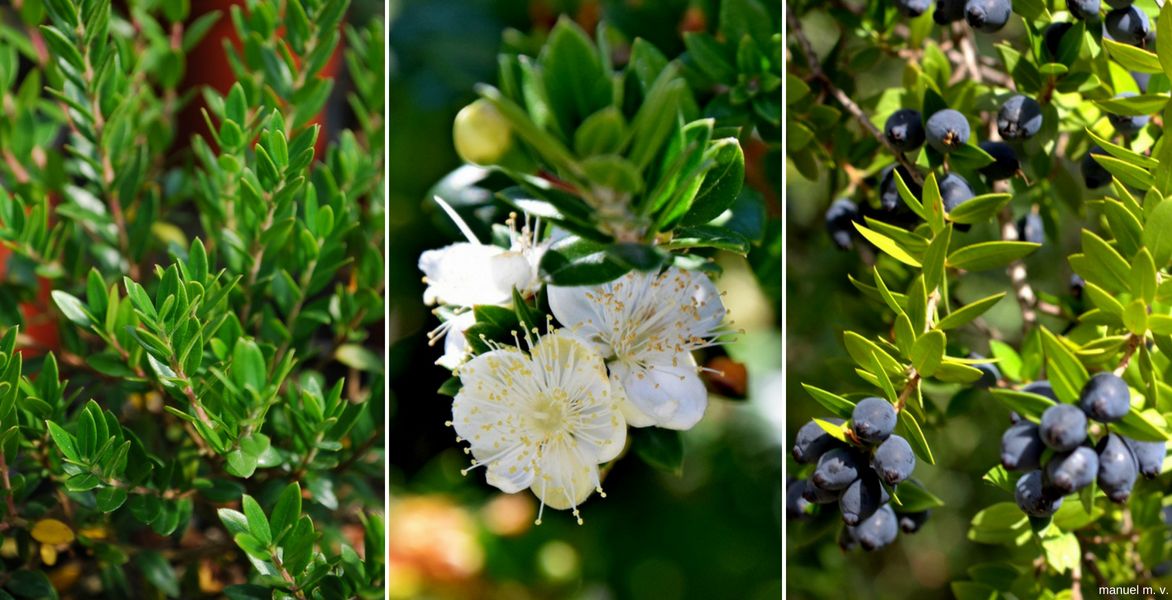
Myrtus communis ‘Tarantina’: foliage, flowers and berries.
The main varieties of Myrtus
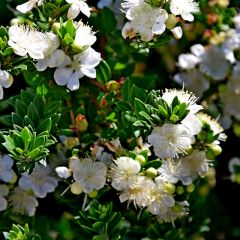
Myrtus communis subsp. tarentina
- Flowering time August to October
- Height at maturity 1,70 m
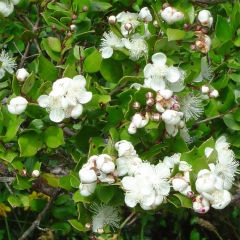
Myrtus luma
- Flowering time August to November
- Height at maturity 3 m
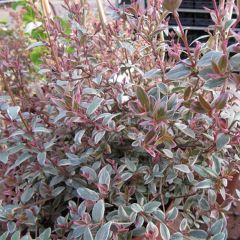
Myrtus ugni Flambeau
- Flowering time July, August
- Height at maturity 1,10 m
Discover other Myrtus - Myrtle
View all →Available in 1 sizes
Available in 2 sizes
Available in 1 sizes
Available in 1 sizes
Available in 1 sizes
Available in 1 sizes
Available in 1 sizes
Available in 1 sizes
Available in 1 sizes
Available in 1 sizes
Planting
The common myrtle, due to its leathery leaves, withstands drought well. It grows in schist soils, draining in winter but cool in summer, acidic, and appreciates cool conditions from sea level to moderate altitude. It tolerates very short frosts down to -10°C, but its subspecies tarentina can withstand temperatures as low as -12°C or even lower.
Chilean and New Zealand myrtles are more demanding in terms of ambient humidity. They particularly thrive along the Atlantic coast or in a sheltered spot, only receiving morning sunlight. Their hardiness ranges from -8 to -10°C for Luma apiculata, Luma chequen, and Ugni molinae, and down to -6°C for Lophomyrtus ‘Magic Dragon’. Lophomyrtus tolerate drought quite well, and there are beautiful variegated forms in purple and cream, ideal for a potted subject that can be brought indoors in winter.
In any case, place the myrtle out of cold winds.
Plant the myrtle in light, well-drained soil that remains fairly cool in summer. The typical species Myrtus communis tolerates little lime, while the subspecies tarentina, or the cultivars ‘Alhambra’, ‘Baetica’ (a dwarf variety of 60 cm), and ‘Guilli’ (a ball shape of 30-40 cm) tolerate a pH above 7 perfectly.
The myrtle has allelopathic properties that prevent seeds from germinating around it, much like Eucalyptus, another Myrtaceae. This characteristic is useful for avoiding the chore of weeding!
When to plant?
Plant myrtles preferably in spring to avoid exposing them to significant frosts before they settle in. In mild climates, plant them in September-October so that autumn rains can aid in their rooting.
How to plant?
To plant a myrtle:
- Soak the root ball in a bucket of water to thoroughly moisten it.
- Dig a planting hole 50 cm wide in all directions or a trench if creating a hedge.
- Add a 10 cm drainage layer (gravel, sand…) if your soil is clayey.
- Place the plant in the planting hole.
- Backfill the hole with soil enriched with compost and lightly compact.
- Water generously.
- Spread a layer of mulch around the base to maintain good moisture around the roots.
Ensure the soil remains cool during the first 2-3 years following planting.
In pots, ensure to place a drainage layer at the bottom, then fill with a mix of leaf compost, turf, or heather soil, and potting soil.
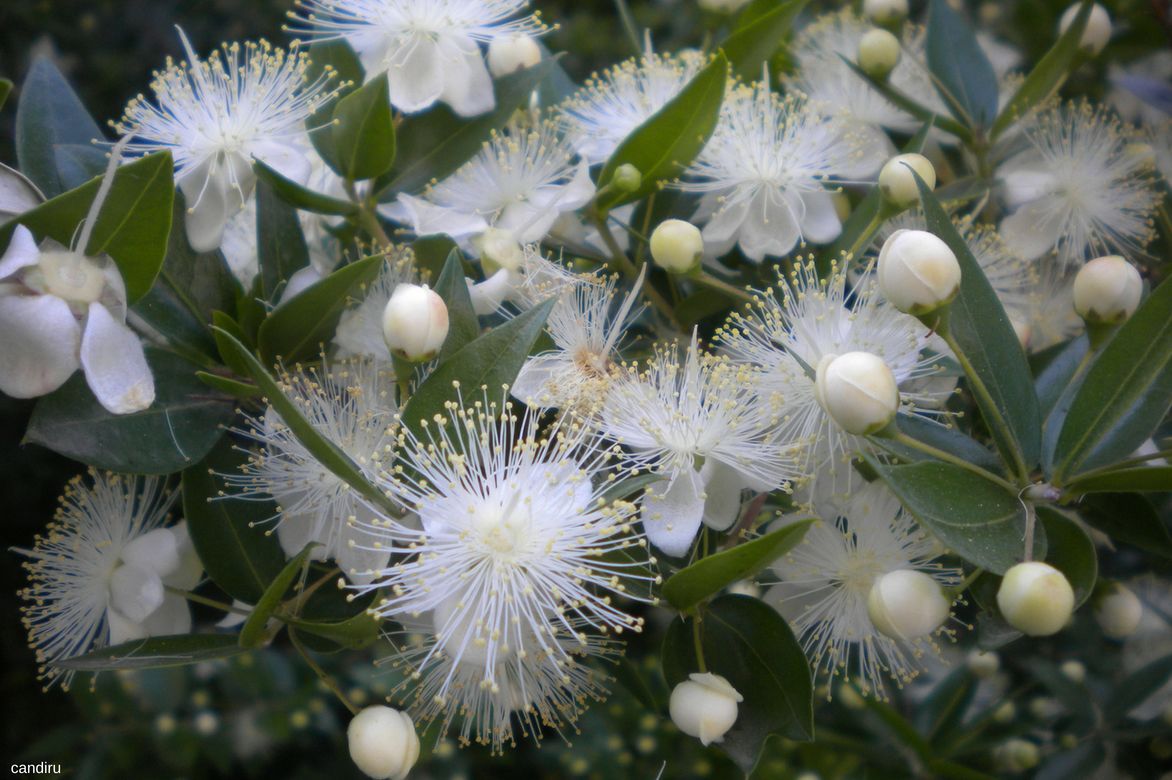
Beautiful flowers with incredible stamens of Myrtus communis ‘Pumila’.
Care and pruning
Water regularly for the first two or three years, especially during hot and dry periods. This bush requires no other maintenance, except for pruning if necessary, which should be light and can be done in April and October to avoid compromising the flowering.
Young plants being more sensitive to cold, consider protecting them with a double layer of winter fleece as winter approaches. If a harsh winter scorches the foliage, a well-established myrtle will easily regrow from the stump.
In pots, provide a complete fertiliser at the start of the growing season, in March-April, and/or top dress with compost in autumn. Bring the pot indoors to a frost-free, bright, and cool room if frost is a concern. Repot in spring.
Common myrtle is not very susceptible to diseases and pests.
Multiplication
Myrtle is a bush that is difficult to propagate. It does not root very easily as the wood is hard, but you can attempt propagation by cuttings from May to July using softwood stems. Sowing is possible in spring under a cold frame. It requires at least 2 years of cultivation before the young plant can be established.
Propagation by Cuttings
Prepare a pot deep by filling it with turf mixed with sand.
- Take heel cuttings by pulling on the shoot to tear off a piece of bark from the bearing branch.
- Remove the leaves located near the base of the cutting.
- Insert the cuttings into the soil up to 2/3 of their height, ensuring they do not touch each other.
- Gently firm the soil around to eliminate air pockets and ensure good contact between the compost and the cutting.
- Place them in a humid environment in the shade at 18°C in a mini greenhouse or by covering them with a cut transparent plastic bottle.
- Make sure to ventilate daily to prevent condensation.
- After 2-3 months, open the greenhouse or remove the bottle and place the cuttings under a frame until spring.
- Separate the rooted cuttings in spring to plant them in individual pots and pinch the stems.
Uses and associations
Common myrtles are hardy plants perfectly suited to dry Mediterranean-style gardens even when exposed to sea spray. Create a colourful checkerboard with other bushes such as flowering or fruiting pomegranate, four-season mimosa, Leptospermum, rosemary, lavender, euphorbia characias, bush sages, tree wormwoods, or on a well-exposed terrace. Choose less vigorous varieties like Myrtus communis ‘Pumila’ or ‘Guilli’ or even ssp. tarentina for pot planting, accompanied by agapanthus for a colourful summer scene. Cover the ground with a thick layer of gravel or pumice to retain moisture and highlight their silhouettes.
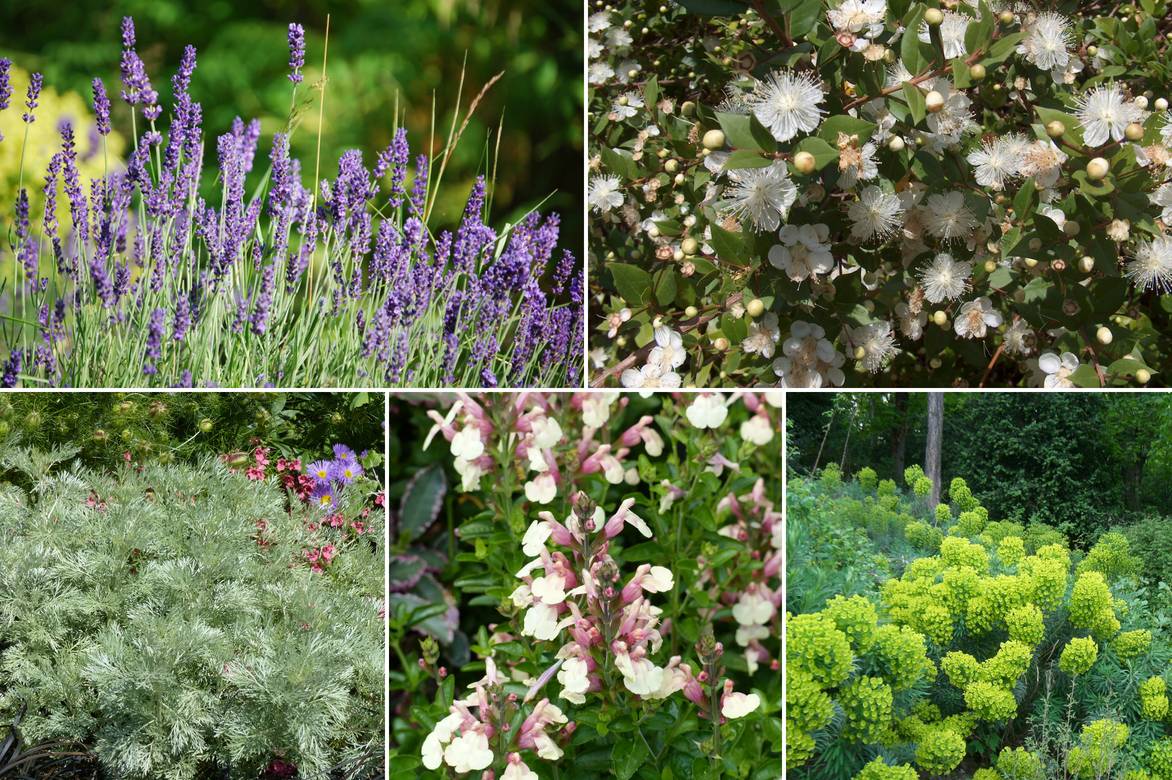
An example of pairing: Lavender, Myrtus communis ‘Pumila’, Artemisia arborescens ‘Powis Castle’, Salvia jamensis ‘Sierra San Antonio’, Euphorbia characias ssp. wulfenii.
On the edge of a grove or woodland, it will join the Mexican orange, the laurel-leaved cistus (hardy large cistus down to -15°C), the Cornus sanguinea, the amelanchier, or even the European spindle ‘Red Cascade’.
The Myrtus is also a good shrub for evergreen hedges in mild climates. In an evergreen hedge, it will pair well with other Mediterranean plants tolerant of dry, calcareous soil and pruning, such as Pistacia lentiscus, Rhamnus alaternus variegatus, Phyllirea, and laurel tin…
The Tarentine myrtle would likely be more used in small trimmed or free-form hedges, and in topiary art.
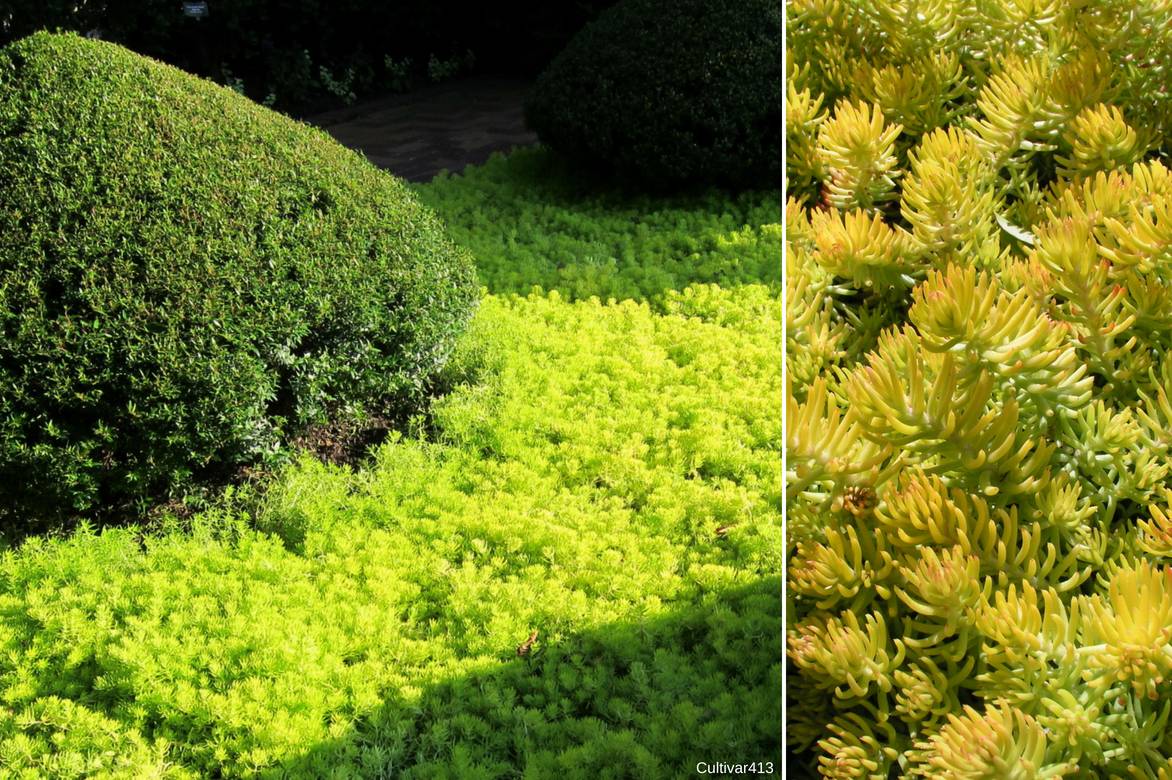
An example of using Myrtus communis in topiary on a bright carpet of Sedum reflexum ‘Angelina’.
Did you know?
In common myrtle, everything is good: fresh or dried leaves, flower buds, flowers, fresh or dried fruits, roots, and bark.
Dried fruits of common myrtle are used like juniper to flavour pâtés, sauces, and also a good wine intended for aperitifs. Myrtle liqueur (berries macerated in brandy for 1 month to which syrup is added) is served very chilled after a meal for its digestive properties!
The essential oil, which is antibiotic and antiseptic, is incorporated into toothpastes, aftershave lotions, soaps…
Myrtle leaf infusion has astringent and digestive properties, particularly used to combat diarrhoea in children.
To go further
Discover our wide range of Myrtles.
- Subscribe!
- Contents
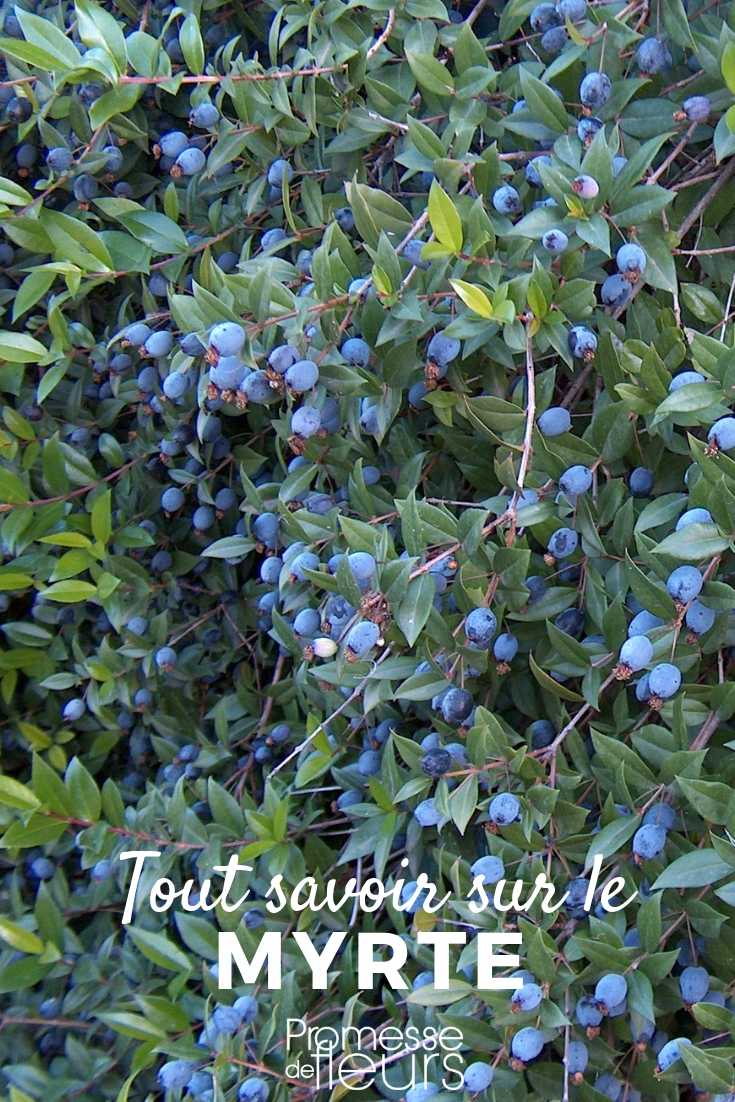































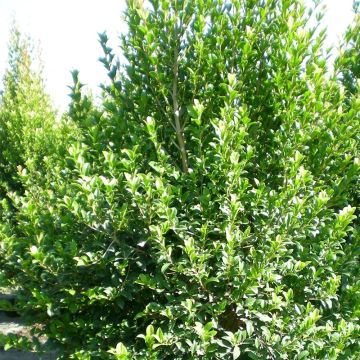

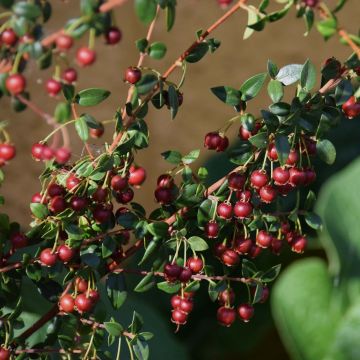
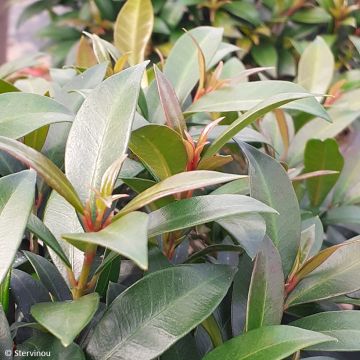
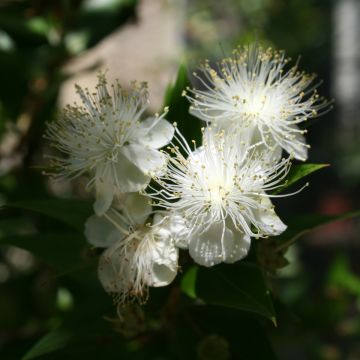
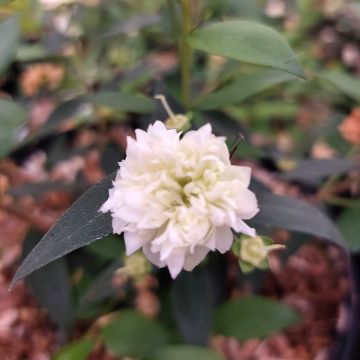
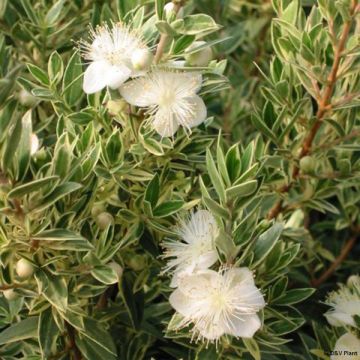
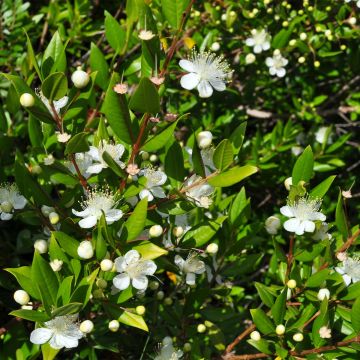
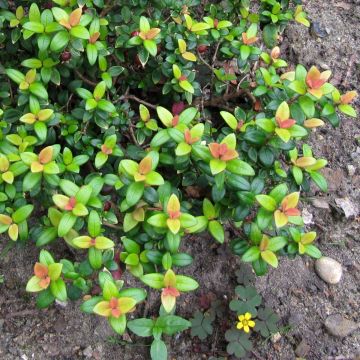
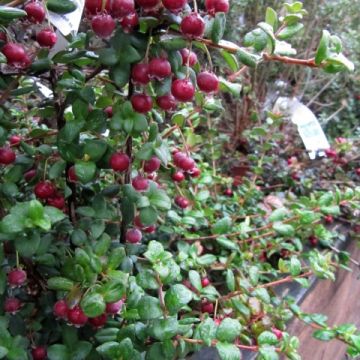
Comments